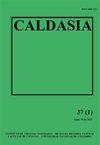Densidad poblacional y organización social del primate endémico y críticamente amenazado Plecturocebus caquetensis (Pitheciidae) en el Piedemonte Andino-Amazónico del Cauca, Colombia
IF 0.3
4区 生物学
Q4 PLANT SCIENCES
引用次数: 1
Abstract
With a range of only 4029 km2, endemic to the Andean-Amazon foothills of the Colombian departments of Caqueta and Cauca, Plecturocebus caquetensis has been considered one of the 25 most endangered primate species around the world. At this date, there are only demographic and ecologic data for the Caqueta department population but the region of the Bota Caucana, which encloses the best-preserved forest within its distribution, has not been evaluated yet. Through the distance line-transect sampling method, we investigated the social structure and population density of P. caquetensis in an alluvial forest with different levels of anthropic intervention and connectivity. For 263 forest hectares, a density of 12.5 individuals/km2 and 5.3 groups/km2 was estimated. A total of 56 individuals in 22 groups were recorded, the average size was 2.5 individuals/group, 80 % of the individuals were adults, 16.4 % young; and 3.6 % subadults. The density reported here is low regarding the estimates made in a black-water flooding forest of the Caqueta department and concurs with that registered in hill forests. This article contributes to the understanding of the population status of species from the area, allowing further research as well as conservation strategies applicable to the Baja Bota Caucana in a socio-environmental and cultural context.哥伦比亚考卡安第斯-亚马逊山脚下特有和受到严重威胁的灵长类动物Plecturocebus caquetensis的人口密度和社会组织
哥伦比亚卡克塔省和考卡省安第斯亚马逊山麓的特有物种,面积仅4029平方公里,被认为是世界上25种最濒危的灵长类动物之一。到目前为止,只有卡奎塔省人口的人口统计和生态数据,但尚未对其分布范围内保存最完好的森林所在的博塔高加索地区进行评估。采用距离样条抽样方法,在不同程度的人为干预和连通条件下,研究了冲积林中草地贪夜蛾的社会结构和种群密度。263公顷森林的密度估计为12.5个人/平方公里和5.3个群体/平方公里。共记录了22组中的56个个体,平均大小为2.5个个体/组,80%的个体是成年人,16.4%是年轻人;亚成年人占3.6%。关于卡奎塔省黑水泛滥森林的估计,这里报告的密度较低,与山地森林的密度一致。这篇文章有助于了解该地区物种的种群状况,从而在社会环境和文化背景下进行进一步的研究以及适用于下博塔高加索的保护策略。
本文章由计算机程序翻译,如有差异,请以英文原文为准。
求助全文
约1分钟内获得全文
求助全文
来源期刊

Caldasia
PLANT SCIENCES-ZOOLOGY
CiteScore
1.30
自引率
16.70%
发文量
28
审稿时长
24 weeks
期刊介绍:
La revista está orientada a publicar contribuciones originales escritas en español o inglés relacionadas con la documentación, comprensión y conservación de la diversidad biológica. La revista contempla el tema de la biodiversidad en un sentido amplio y por tanto incluye trabajos en áreas como botánica, zoología, ecología, biodiversidad, biogeografía, taxonomía, sistemática, conservación, y disciplinas afines.
 求助内容:
求助内容: 应助结果提醒方式:
应助结果提醒方式:


